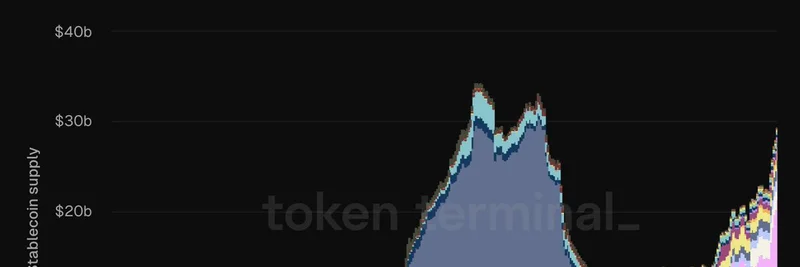Have you ever wondered who's really powering the stablecoin world behind the scenes? A recent tweet from Token Terminal sheds light on this, showing how the stablecoin supply has grown over time, broken down by issuers. But the real eye-opener? When you remove giants like Tether and Circle, the picture changes dramatically. As someone who's been deep in the crypto space, I can tell you this matters a lot—especially if you're into meme tokens, where stablecoins are the go-to for quick trades and liquidity.
Stablecoins are cryptocurrencies designed to maintain a stable value, usually pegged to something like the US dollar. They're crucial in the blockchain world because they let you move value without the wild price swings of things like Bitcoin or those viral meme coins. Think of them as the steady bridge in a volatile ocean.
The chart from Token Terminal illustrates the total stablecoin supply from 2018 to 2025, stacked by different issuers. At first glance, it's clear that Tether (in green) and Circle (in blue) dominate the scene. Together with a couple of others, the top four issuers control over 96% of the market share. Tether is a private company, Circle is publicly listed, and then there are DAOs like Ethena and Sky adding a decentralized twist.
Looking closer, the supply has exploded from nearly zero in 2018 to around $40 billion by mid-2025. Tether leads the pack, followed by Circle, with smaller players like Ethena, Sky, and others filling in the gaps. But as the tweet points out, scratch Tether and Circle from the equation, and you're left with a much more fragmented and diverse group of issuers. Names like World Liberty Financial, PayPal, Paxos, First Digital Labs, Ripple, and more start to stand out.
Why does this matter for meme token enthusiasts? Meme coins thrive on hype, community, and fast liquidity—often traded against stablecoins on decentralized exchanges (DEXs). If the stablecoin market is too concentrated, any issues with Tether or Circle (like regulatory scrutiny or peg breaks) could ripple through to meme trading volumes. Remember the TerraUSD collapse in 2022? It wiped out billions and shook confidence. A more diverse issuer landscape could mean more resilience, which is great for keeping those meme pumps going.
On the flip side, this concentration shows maturity in the space. Tether and Circle have built trust through reserves and audits, making them reliable for everyday crypto use. But the rise of DAOs like Ethena (which focuses on synthetic dollars) and Sky (formerly MakerDAO's rebrand) hints at a shift toward decentralized alternatives. These could appeal to the meme crowd, who love community-driven projects.
If you're building or trading in the meme token ecosystem, keep an eye on these trends. Tools like Token Terminal provide data to spot opportunities early—maybe the next big stablecoin issuer is a DAO that integrates seamlessly with meme platforms. For more on how stablecoins fuel meme mania, check out our knowledge base on meme token liquidity strategies.
What do you think—will decentralized issuers dethrone the big two? Drop your thoughts in the comments!



